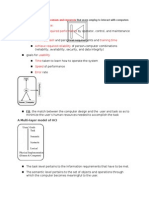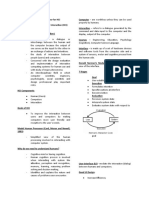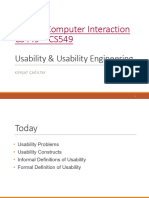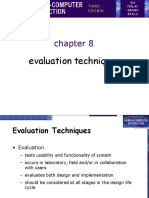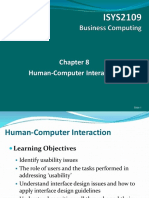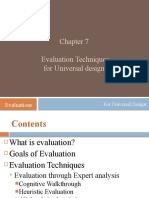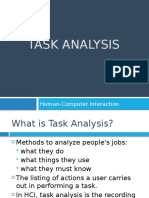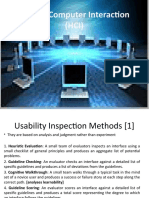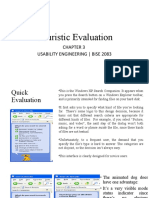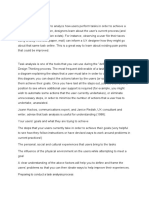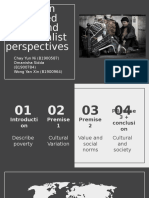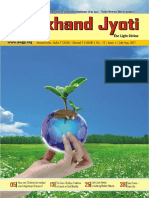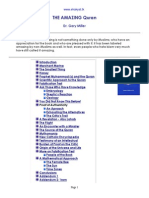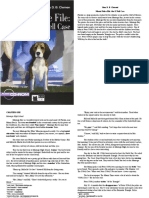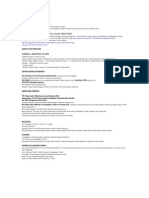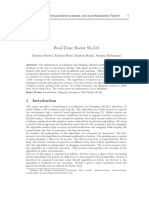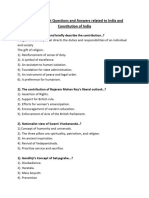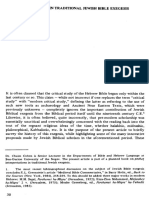0% found this document useful (0 votes)
41 views34 pagesTask Analysis
The document discusses task analysis methods like hierarchical task analysis that are used to understand human-system interaction and identify potential problems, it also covers design evaluation methods like heuristic evaluation and usability testing to iteratively improve designs based on user data. Task analysis examines the tasks and cognitive processes needed to achieve goals while hierarchical task analysis structures tasks into goals, sub-goals and operations to systematically identify sources of error.
Uploaded by
Wong Yan XinCopyright
© © All Rights Reserved
We take content rights seriously. If you suspect this is your content, claim it here.
Available Formats
Download as PDF, TXT or read online on Scribd
0% found this document useful (0 votes)
41 views34 pagesTask Analysis
The document discusses task analysis methods like hierarchical task analysis that are used to understand human-system interaction and identify potential problems, it also covers design evaluation methods like heuristic evaluation and usability testing to iteratively improve designs based on user data. Task analysis examines the tasks and cognitive processes needed to achieve goals while hierarchical task analysis structures tasks into goals, sub-goals and operations to systematically identify sources of error.
Uploaded by
Wong Yan XinCopyright
© © All Rights Reserved
We take content rights seriously. If you suspect this is your content, claim it here.
Available Formats
Download as PDF, TXT or read online on Scribd
/ 34
